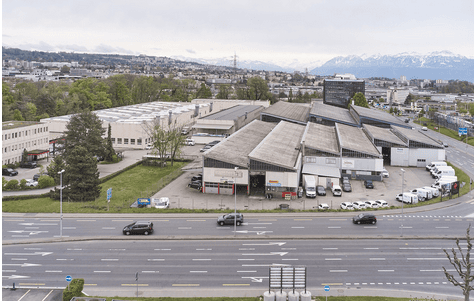EY Trendbarometer: Switzerland remains attractive
Switzerland remains attractive for real estate investments in 2017, according to the "Trendbarometer Real Estate Investment Market Switzerland 2017" by EY Real Estate. According to the survey, almost three quarters of the survey participants prefer the location in direct comparison with other European countries.

90 percent of all respondents consider the Swiss real estate market to be attractive or even very attractive, according to the "Trend Barometer Real Estate Investment Market Switzerland 2017" by EY Real Estate. This represents a minimal decrease of one percentage point compared with the previous year. For the study, around 50 investors who have been active in the Swiss real estate market in recent years gave their assessment for the development of the current year.
Stable prices only for 1A locations
The anticipated developments in the micromarkets vary: For office properties in prime locations, more than half of investors expect prices to remain stable in 2017. 27 percent of respondents expect prices to fall and 20 percent anticipate a price increase. For 1B locations and the periphery, investors largely forecast falling prices.
A similar picture is emerging in the retail real estate sector: While 52 percent of investors predict stable or rising prices in 1A locations, the outlook for 1B locations and periphery remains rather negative in 2017.
"To avoid vacancies, landlords of office properties need to offer attractive incentives to investors," says Daniel Zaugg, Partner and Sector Leader Real Estate at EY Switzerland. "On the transaction front, sales in 2017 also represent a major challenge - very specifically for 1B and peripheral locations," says Claudio Rudolf, Partner and M&A Real Estate Leader at EY Switzerland, commenting on the current situation.
Stable prices in residential construction
Expectations for the residential construction sector in 1A locations are also positive: 91 percent of investors anticipate stable or rising prices, and the majority also foresee stable price development for 1B locations and periphery in 2017.
According to Claudio Rudolf, investors are also focusing less and less on the high-price segment: "The trend is clearly moving in the direction of affordable housing," he says.
Hotels: luxury segment under pressure
Prices of hotel properties in prime locations are rated somewhat more positively than in the previous year. 69 percent (previous year: 53%) expect prices to remain stable, and as many as eleven percent anticipate rising prices. By contrast, investors continue to see no light on the horizon for peripheral locations. 78 percent of respondents expect prices to fall. More than half (54%) also expect property values in 1B locations to fall, while another 41 percent expect prices to remain stable.
"Regardless of the location, the luxury segment in particular has a hard time in the hotel business - also due to the strong Swiss franc. Innovative and urban-oriented players in the mid-price segment, on the other hand, have opportunities for good returns," says Rudolf.
Real estate almost "no alternative
Investment alternatives to real estate remain scarce in view of the low interest rates and volatile stock markets - a meaningful reinvestment of free capital therefore remains a challenge in 2017. Unsurprisingly, EY respondents are planning fewer large transactions in their commercial real estate portfolios compared with the previous year. The majority (57%) of respondents are not planning an exit from the real estate sector themselves. As a possible option, 29 percent of respondents say they can imagine a direct sale of an individual property.
At the same time, 80 percent of respondents expect prices to rise due to the shortage of products on the Swiss market. For this reason, investments abroad are likely to remain interesting in 2017. "Higher yield expectations are increasingly prompting Swiss buyers to make real estate investments abroad," says Daniel Zaugg.
Zurich region remains most attractive location
Investors who decide to invest in real estate in Switzerland prefer the Zurich region for office and retail properties. The investment locations of Geneva and Basel remain popular. Compared with the previous year, demand for retail properties in Bern, Lucerne and St. Gallen has fallen, while in Lausanne it has risen by three percentage points to 15 percent.
Demand for residential real estate shows no clear focus. According to the respondents, Zurich and Lucerne (15% each) as well as Basel and Bern are the investment focus in 2017, followed by Geneva and Lausanne (7% each) and Lugano with five percent.
Uncertainty due to rising interest rates
The vast majority of respondents (88%) agree with the statement that demographic change will have a significant impact on the real estate market. Investors also consider future interest rate developments (74%), political instability (71%), urbanization (67%) and digitalization (61%) to be relevant trends in 2017.
According to Zaugg, rising interest rates shortly before the end of the year have unsettled the real estate market. "Investors are rightly asking themselves where the journey will take them in 2017."
Methodology
For the "Real Estate Investment Market Trend Barometer", investors who have been active in the Swiss real estate market in recent years are surveyed annually. The approximately 50 participants of this now 7th edition were surveyed between October and November 2016. The barometer is intended to provide an assessment of the Swiss real estate investment market in the coming year and also provide an outlook on the strategy that investors will pursue in Switzerland in the coming year.









